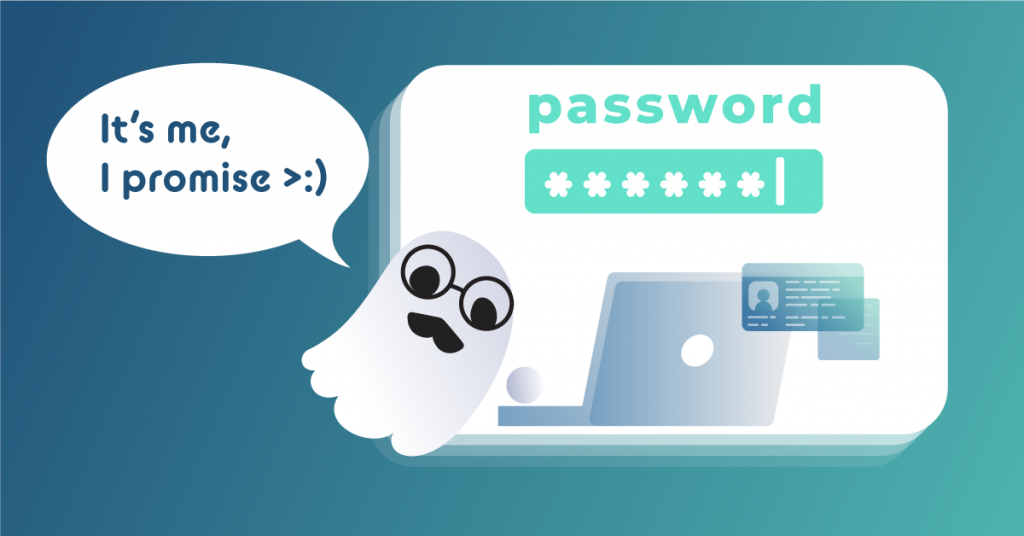5 Quick and Easy Ways to Avoid ID Theft
Identity theft has gone online

Identity theft happens when criminals use a victim’s identity to, for example, buying things and paying in installments. But to do this, criminals first need to steal your personal information, such as your name, phone number, birthday, social security number, address, and credit card number.
And the internet is a perfect place to find these details; social media, shopping accounts and other profiles are full of them. Of course, they can’t be accessed by just anyone. But cyber criminals have multiple ways of stealing information, and with identity data available in huge quantities online, it makes it far easier to use for fraud, with a small risk of getting caught. That’s why ID theft nowadays mostly happens online.
The damage can be severe and long-lasting
Repairing the damages of identity theft takes a lot of time and effort, with some victims only realizing that their identity has been stolen when they get bills or contacts from debtors. And as well as all the financial costs, becoming a victim can cause emotional distress, too. So, while the criminals walk away with the profits, the victim is left with all the consequences.
Anyone can become a victim of identity theft
When it comes to our personal information online, many people think they don’t have anything worth stealing. Or that nobody would bother trying to steal their identity. Unfortunately, this couldn’t be further from the truth. Online criminals are ruthless. They often prey on easy targets. And the victim’s wealth or lack of it doesn’t prevent identity theft. Because credit cards, payday loans and installment agreements can be acquired in anyone’s name.
But to do that, criminals first need to steal personal information.
Thankfully, though, there are a number of ways that you can make identity theft less likely, and by following the simple steps below you can protect your personal information.
1. Set your email address under 24/7 breach monitoring
Most online accounts are created with an email address and a password. When criminals breach an online service, they aim to steal the personal information within. Like passwords and email addresses. And if criminals manage to get their hands on this information, they have access to all the information in your account.
But if you don’t know about a data breach , you can’t really protect yourself from the damage. So set your email address for data breach monitoring. Once you’ve done this, when a service with an account created with it gets breached, you will get an alert. And if you change your password immediately, criminals will be left with your old password, and they can’t steal your data with that.
2. Use unique passwords
Passwords are keys to personal information in online accounts. Almost every online service uses them to restrict unauthorized access. Criminals steal passwords through data breaches, phishing scams, malware, and intercepting web traffic.
Use unique passwords and you can protect your personal details online. By using unique passwords if your password gets compromised, the damage is limited to only one account. Whereas if you use the same password everywhere, all your accounts across the web are compromised. Use a password manager so you can store your unique passwords and have them at hand always when you need them. And use a strong password generator to make it as secure as possible.
3. Use antivirus software
Computer viruses and malware steal personal information. Some record your keystrokes when you type in passwords. Others go through your cookies, or the passwords saved on your browser. Stop them from stealing your data with an antivirus software. It’s easier and safer to prevent infection than to deal with a virus that’s already on your device.
4. Be careful when opening links and attachments
Phishing means tricking you into giving your personal information to criminals. Phishing sites, emails and messages often resemble a real and famous brand. They can look very convincing. URLs (aka the www. address of the page) on phishing sites may have just a one-character difference with that of an actual site. Same goes with email sender addresses.
So be careful. Don’t click any suspicious links or open attachments, especially in emails. They can lead to phishing sites and also include malware. And if you feed in your credentials, the site owner can then use them for ID theft. To avoid this, make sure to check the sender and the URL of the page before feeding in your info.
5. Use a VPN on public WiFi networks
Setting up a public WiFi hotspot is really easy. And nothing prevents naming it “Free airport WiFi”, “Hotel Guest”, etc. That’s why you can never know if a public WiFi network is safe. The network owner can intercept your usernames, passwords, messages, and bank information, if your connection is not secure.
But with a VPN , you can use any WiFi network without having to worry about criminals stealing your data. VPN encrypts your web traffic so outsiders can’t steal your passwords and other information from it.
MTA Shield+ ID Protection helps you avoid identity theft
If criminals steal your personal details, they can steal your identity. ID theft is costly, and fixing things takes long. Preventing identity theft can save you money and time.
MTA has partnered with F-Secure, a global leader in cybersecurity, to build a solution so our members have the tools to stay safe online. Avoid data breaches and identity theft with 24/7 risk detection, secure browsing, and password management with MTA Shield.
Keep your data protected around the clock, with MTA Shield – designed to work specifically with our totalWiFi gateway.